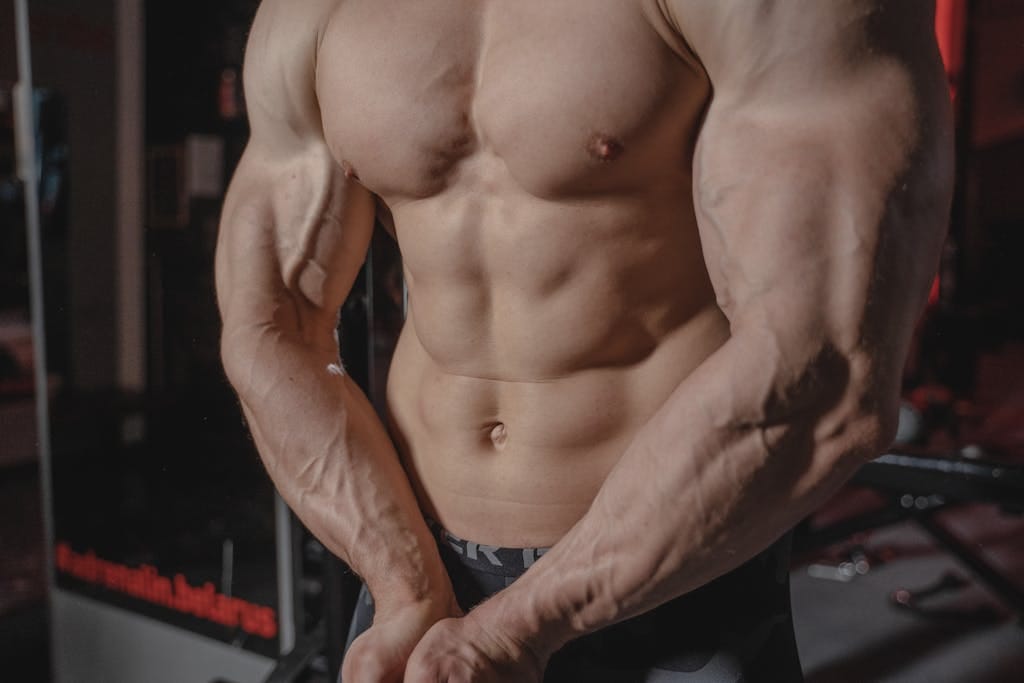FREE SHIPPING OVER $50
Your Chest Day Is Broken: 5 Exercises Experts Beg You to Stop Doing Immediately
If you’re pushing hard on chest day but still not seeing the growth, strength, or definition you expected, you’re not alone. In fact, many lifters unknowingly sabotage their results with outdated or just plain bad chest exercises. Even worse—some of these movements can cause more damage than benefit, leading to plateaus or even injury.
We asked strength coaches and certified personal trainers to weigh in on the most common chest exercises that are overhyped, ineffective, or just plain dangerous. Their advice was clear: it’s time to stop doing these five exercises and upgrade your chest routine for good.
Why Chest Exercise Selection Is So Important

Your chest (aka the pectoralis major and minor) is a large, powerful muscle group that deserves more than a half-hearted bench press routine. To build size, strength, and symmetry, your workout needs variety, safe mechanics, and exercises that actually target the chest—not your shoulders, not your triceps, and definitely not your ego.
Unfortunately, many chest day staples have become popular not because they’re effective, but because they look hardcore or feel tough. The problem? More strain doesn’t always equal more gain. Sometimes it just means more joint stress and wasted effort.
Let’s break down the five exercises trainers say you should stop doing right now.
1. Behind-the-Neck Smith Machine Press: It’s a Shoulder Disaster
This old-school movement is still hanging around in some chest day routines, especially in Smith machines. The idea is to get a deeper stretch on the pecs by lowering the bar behind your neck. But in reality, this puts an unnatural amount of stress on your shoulder joints and rotator cuff.
Not only is it biomechanically awkward, but most people don’t have the shoulder mobility to do it safely. You’re better off doing standard incline or flat bench presses with good form and a full range of motion.
2. Dumbbell Chest Flys with Excessive Stretch: More Tear Than Tone
Yes, dumbbell flys can be great for chest activation—if done right. But the version you often see involves people dropping the dumbbells way too low, turning the movement into a shoulder stretch from hell. This can lead to strained ligaments, pec tears, and zero gains.
Instead, keep the range shorter and the motion controlled. Focus on the squeeze at the top rather than how far you can open up your arms.
3. Barbell Guillotine Press: A Recipe for Injury
This controversial movement involves lowering the barbell straight down toward your neck, supposedly to isolate the upper chest. In theory, sure—it places the pecs under stress in a unique position. In reality, it’s one of the riskiest chest movements you can do.
The guillotine press puts enormous stress on the shoulder capsule and neck area. The slightest slip or loss of control could end your gym streak with a trip to the ER. There are far safer ways to hit your upper chest, like incline dumbbell presses or landmine presses.
4. Machine Chest Press with Locked Shoulder Position: Restricts Natural Movement
Machines have their place—especially for beginners—but some chest press machines lock your shoulders into an unnatural path. This can reduce muscle activation and put unnecessary strain on the joints.
Worse, these machines often promote poor posture and eliminate the stabilizer muscle engagement you’d get from free weights. While machines are useful for drop sets or burnout sets, don’t rely on them for your main lifts.
5. Excessive Pec Deck or Cable Crossovers: Looks Cool, Does Little
The pec deck (or chest fly machine) and cable crossovers are often overused in chest routines. People flock to them for the burn, the pump, or because it looks like you’re really isolating the chest. But in truth, over-relying on these exercises—especially at the start of your workout—means you’re prioritizing isolation when you should be focusing on compound strength moves.
These machines are fine as finishers, but they shouldn’t be the centerpiece of your chest training. If your goal is muscle growth and strength, prioritize pressing variations first.
How to Fix Your Chest Day for Real Results
Now that you’ve cleared out the junk movements, it’s time to rebuild your chest day with smarter, more effective lifts. Here’s a general strategy trainers recommend:
- Start with a heavy compound movement – Think flat barbell bench press or dumbbell press. Focus on progressive overload.
- Follow with an incline variation – Target the upper chest with incline dumbbell or landmine presses.
- Add a bodyweight or cable move – Push-ups, dips, or cables for time under tension.
- Finish with smart isolation work – Controlled dumbbell flys or cable crossovers to finish off the chest.
This structure helps you train all portions of the chest, avoids unnecessary strain, and supports both strength and size gains.
Don’t Chase Pain—Chase Progress
Chest training doesn’t have to be complicated, but it does need to be intentional. If you’re doing exercises just because they look intense or someone at the gym swears by them, take a step back. Focus on proper form, smart exercise selection, and tracking your progress. That’s how you build a strong, injury-proof chest over time.
Conclusion
Your chest day may be broken, but it’s totally fixable. By ditching the five exercises that do more harm than good, you’re setting yourself up for real progress—without risking your shoulders, wasting time, or stalling your gains.
Related Articles
- Back Day Breakthrough: Why Trainers Are Begging You to Add This Game-Changing Move
- Build Stronger Legs at Home with These Trainer-Approved Dumbbell Exercises
- Strengthen Every Muscle In Your Body with This 5-Move Resistance Band Workout
- Want Strong, Toned Arms? Try This Trainer’s 8-Exercise Routine Today
- 5 Low-Impact Exercises to Strengthen Your Whole Body—No Jumping Needed



